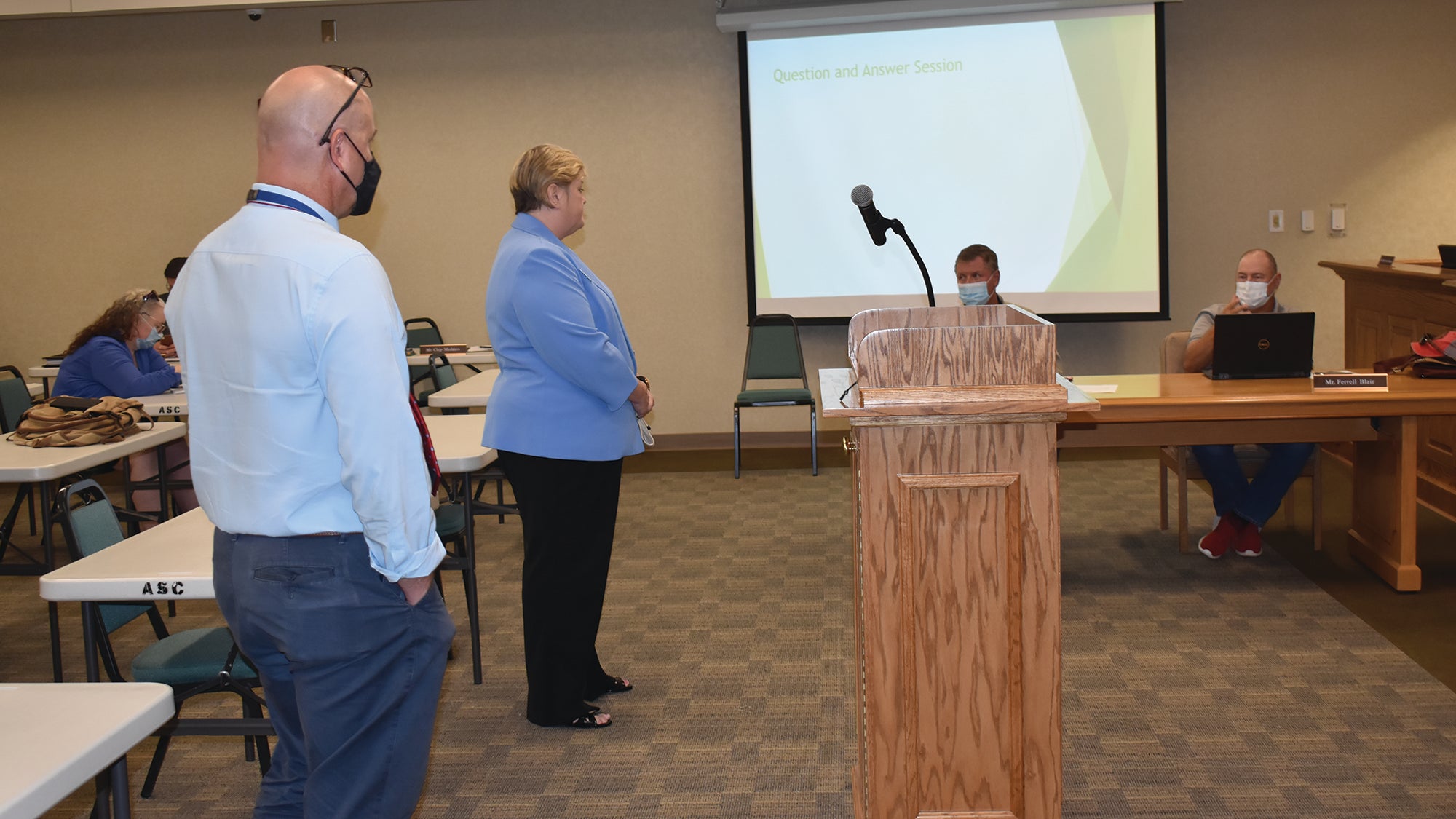Troup County Career Center leaders discuss career center, Option B at meeting
Published 9:00 am Friday, September 24, 2021

- Troup County Career Center Principal Jeff Little and instructional coordinator Dr. Kathy Bowen discussed the Troup County Career Center and Option B.
|
Getting your Trinity Audio player ready...
|
At the TCSS school board meeting on Tuesday, Troup County Career Center Principal Jeff Little and instructional coordinator Dr. Kathy Bowen presented an overview of the Troup County Career Center and its Option B services.
“In 2017, we started performance learning centers at each of the campuses,” said Jonathan Laney, director of secondary education. “These programs are designed to allow credit deficient students to demonstrate their knowledge of standards in order to expedite their ability to regain credit toward graduation. Students were provided instruction in areas of deficiency and were accelerated when they demonstrated mastery. As a result, we were able to graduate a lot more kids on time.”
Laney said that last year, all of TCSS’s performance learning centers were consolidated into a single campus, and TCSS opened a career center which is now under the leadership of Little and Bowen.
“Under their leadership and the superintendent’s vision, we quickly began to expand in scope the services that were provided beyond remediation opportunities,” he said.
Little said the career center is the “greatest place on Earth.”
“It’s a place where I get to watch students who have become disenfranchised with their educational process, who are falling behind and don’t see a path forward to graduation, see their future, reach for it, and achieve,” he said. “I think I shared last year that we had received a group of students that had a 0% chance of graduating on time with their class. Their graduation rate was slated to be 0%. We achieved a 65% graduation rate and had 73 high school graduates to the TCSS.”
Little explained that students in the career center can remain enrolled in regular high school classes.
“For the 2021 cohort, the average number of credits that our students have, and this is the fifth year seniors — these are students that were supposed to graduate for 21 — they average about 16, 17.6 credits. With the 22 cohort, they’re averaging about 13 credits. They need 23 to graduate.”
He said the career center can allow students to graduate ahead of their regular graduation date. It teaches students through Odysseyware, which is a virtual learning platform, and traditional classes.
“We do have two content teachers now,” he said. “We’re looking to expand to some more content level teachers. We have English and math right now … Students struggle with algebra, they struggle with geometry, they struggle with British lit. These are courses that they struggle with, and they need additional help. Sometimes we give them direct instruction in the classroom.”
Little said students in the program have to go through an employability skills class.
“We have partnerships with businesses and industry, manufacturing, in which we have something that they call mini shifts,” he said. “A student is able to work for four hours a day. They receive high school credit while they’re doing that. And they are on-board and full time once they graduate from high school.”
Little said the center offers services such as Blueprint for Success, which provides mentorship opportunities for students, and Brain Jogging, a program that works with neuroplasticity to raise academic achievement. Students are also offered stress management and conflict resolution classes.
“There is an opportunity for dual enrollment through Option A, which you’re probably very familiar with, where students can be enrolled in the high school curriculum and university, college level curriculum at the same time,” he said. “They receive credit in both places. That’s Option A.”
He explained that with Option B, students can receive certifications at the technical college level and graduate with fewer high school credits.
Bowen said that Option B was passed by the Senate in 2015 and that in Troup County, it’s offered through the Career Center.
“It takes that 23 credit high school credit requirement down to nine,” she said. “They have to have two English, two math, two science, two social science, a health, and a PE. They have that portion of high school. Then they have to have two technical certificates from the technical college, and they have their specific requirements.”
Bowen said that West Georgia Tech offers Option B students career routes in precision manufacturing, welding, automotive, and early childhood.
“Last year, we started with three Option B students in January in welding,” she said. “This year, we have 26. We have 17 in welding, [of] which one is female (I’m quite proud of [her), and there’s nine in automotive.”
Bowen said that to get into West Georgia Tech, Option B students have to have at least five high school credits. To get into the program, students have to have a HOPE GPA of 2.0 or pass the three sections of the Accuplacer test.
“What we want to do with Option B — and this is something I wanted to share with you — is that right now, we’re using it for kids that are credit deficient,” Little said. “… What we want to do is we want to take students that might drop out — not students that are already behind — we want to look toward kids that are in the ninth grade that might be more technically-inclined than academically-inclined and give them that opportunity to become a welder and graduate, sometimes ahead of schedule, usually on time with their cohort but sometimes ahead of their cohort.”



